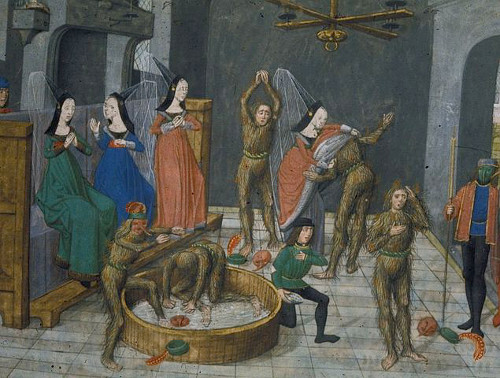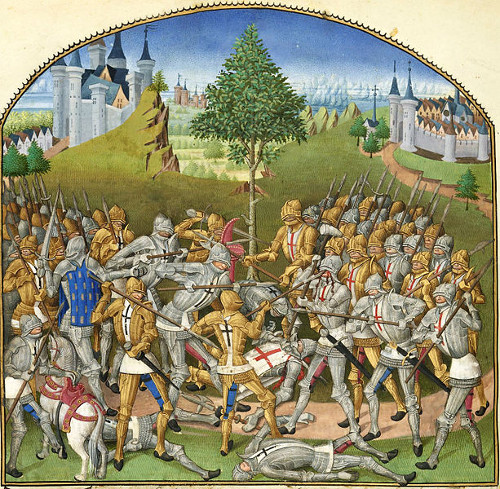
On Jan. 28, 1393, during a riotous wedding at the royal palace of Saint-Pol, Charles VI and five French nobles dressed up as wild men using linen costumes covered with pitch and hair and ranged among the guests, howling like wolves and daring them to guess their identities. One guest approached too closely with his torch and set them ablaze. The Duchess of Berry had the presence of mind to throw a cloak over the king, and one of the nobles managed to dive into a barrel of water. “The other four were burned alive their flaming genitals dropping to the floor, [the Monk of St. Denis] remarks with a sharp but on this occasion rather unsavoury eye for detail, releasing a stream of blood,” notes Jan R. Veenstra in Magic and Divination at the Courts of Burgundy and France. “Three of them, the count of Joigny, the bastard of Foix and Aymeri de Poitiers were deeply mourned; a fourth victim, Huguet de Guisay, was left wailing in agony for three days before he too expired, but he was not mourned, the Monk of St. Denis explains, since he was a vicious man and people were glad to see him perish.”

On March 26, 1351, during the Breton Civil War, the contending fortresses of Josselin and Ploërmel agreed to an organized contest: Each side would select a team of 30 knights who could fight with any weapons they chose, including swords, maces, and battleaxes. Referees would signal the start of the melee and manage truces for refreshments and medical care. The fight went on for hours. In the end, English commander Robert of Bamborough, of Ploërmel, and eight of his men were slain and the rest taken captive; the pro-French Breton team lost four (or perhaps six) knights; and both sides were badly wounded. The “combat of the thirty” made heroes of its victors and became a symbol of chivalry during the Hundred Years’ War; in 1373, Jean Froissart saw firsthand the honor accorded to a survivor who displayed his scars at a feast given by Charles V.
(Thanks, Davecat.)
